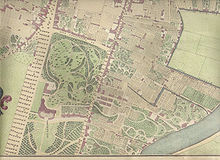
Haarlem is a city and municipality in the Netherlands. It is the capital of the province of North Holland. Haarlem is situated at the northern edge of the Randstad, one of the more populated metropolitan areas in Europe; it is also part of the Amsterdam metropolitan area. Haarlem had a population of 162,543 in 2021.

Willem Bilderdijk was a Dutch poet, historian, lawyer, and linguist.

The Frans Hals Museum is a museum located in Haarlem, the Netherlands.
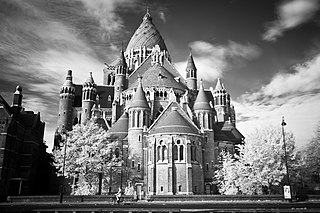
The Cathedral of Saint Bavo is a cathedral in Haarlem, the Netherlands, built by Joseph Cuypers from 1895 to 1930 to replace the former waterstaatskerk in the Jansstraat called the St. Joseph. That church was itself a replacement for the Sint-Bavokerk, that had been converted to Protestantism from Catholicism in 1578. The Cathedral of Saint Bavo now serves as the main cathedral for the Roman Catholic Diocese of Haarlem-Amsterdam. Within the cathedral, the former sacristy has been converted into a small museum (schatkamer) containing historical artefacts from Haarlem's Catholic past.

Isaac Jan Alexander Gogel was a Dutch politician, who was the first minister of finance of the Batavian Republic and the Kingdom of Holland. He married Catharina van Hasselt in 1800, and had three children.
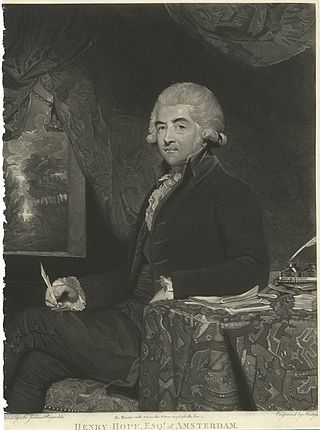
Henry Hope (1735–1811) was an Amsterdam merchant banker born in Braintree, Province of Massachusetts Bay. He emigrated to the Netherlands to join the family business Hope & Co. at a young age. From 1779, Henry became the manager of Hope & Co. and he participated in the firm for about a third from 1782. He is considered to be as great a genius as his uncle Thomas Hope. In 1786 Adam Smith dedicated the fourth edition of his book The Wealth of Nations to Henry Hope in hopes of increasing his readership:

Hope & Co. was a Dutch bank that existed for two and a half centuries. The bank was located in Amsterdam until 1795; originally it concentrated on Great Britain. From 1750 it played a major part in the finances of the Dutch East India Company (VOC) through Thomas Hope and his brother Adrian. During the Seven Years' War (1756–1763) the Hope brothers profited from the Netherlands' neutral position and became very wealthy. The Hopes became heavily involved in the Dutch Caribbean, and Danish West Indies. They specialised in plantation loans, in which the entire produce of the plantation was remitted to the lender, who would supervise its sale in order to secure repayment. In this way, the Hopes helped the plantation economy to become integrated into a global network of financiers and consumers. The Hope family were among the richest in Europe at the time. The family business focused on financing commercial transactions and especially on issuing money loans to monarchs and governments in Denmark, Sweden, Poland, Russia, Portugal, Spain, France and America. The bank was famous for having Catherine the Great as their client and Adrian supplied her several times with diamonds.
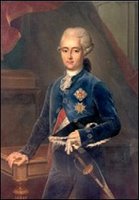
Frederick III, Prince of Salm-Kyrburg was the prince of Salm-Kyrburg, Hornes and Overijse, Gemen and Count of Solre-le-Château. He was the eldest son of Philip Joseph, Prince of Salm-Kyrburg and Princess Maria Theresa of Hornes, and he grew up at the French court. Through his mother, the eldest daughter of Maximilian, Prince of Hornes, he inherited all the possessions of the Hornes family. He held the title from 1779 to 1794.

John Hope, also known as Jan Hope, was a wealthy Dutch banker, participating in Hope & Co., a member of the city council and an art collector. In 1770 he was appointed as manager of the Dutch East India Company (VOC). He is also known today for his Groenendaal Park in Heemstede, where he summered on his estate. Shortly before he died he bought the nearby "Bosbeek". This estate became one of the first examples of a large garden in the 'English Style' in the Netherlands, and shaped by his second son Adrian Elias. His oldest son Thomas Hope became a designer of neoclassical interior decoration, and his youngest son Henry Philip Hope a gem collector and jewelry specialist.

Lange Voorhout Palace in The Hague was designed in 1760 by the architect Pieter de Swart for Anthony Patras (1718-1764), a deputy to the States General of the Netherlands.

Abraham van der Hart was an 18th-century architect from the Northern Netherlands.

The Trippenhuis is a neoclassical canal mansion in the centre of Amsterdam. It was built in 1660–1662 for the wealthy Amsterdam weapons traders Louis and Hendrick Trip. Many references to weaponry can be seen on its facade. Since 1887 it has been the seat of the Royal Netherlands Academy of Arts and Sciences (KNAW).

The Amsterdamse Joffers were a group of women artists who met weekly in Amsterdam at the end of the 19th and beginning of the 20th century. They supported each other in their professional careers. Most of them were students of the Rijksakademie van beeldende kunsten and belonged to the movement of the Amsterdam Impressionists. Each one became a successful artist. As a group they contributed to the social acceptance in the Netherlands of women becoming professional artists.
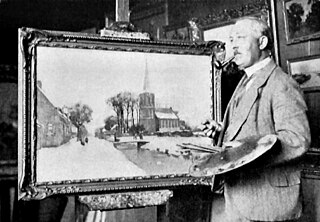
Bernardus Antonie van Beek was a Dutch landscape painter. He never attended an academy. He was part of the Kortenhoef School, a sub-movement of the Hague School and is thus in the tradition of Barbizon School. From his choice of motifs, there are also influences of the Amsterdam Impressionism. His work was part of the painting event in the art competition at the 1928 Summer Olympics.

Maria Hoofman (1776–1845), was a 19th-century art collector from the Northern Netherlands.
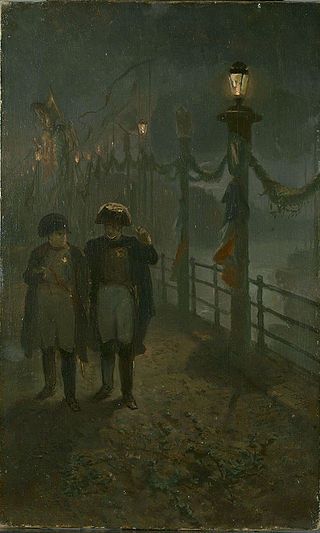
In late September 1811 Napoleon I visited the former Kingdom of Holland; he explained to Armand Augustin Louis de Caulaincourt his goals: a war at sea with England, to form a government, and ordering the "Routes impériales".
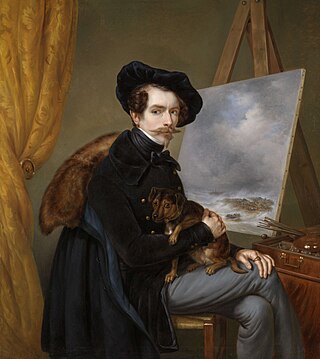
Johan Hendrik Louis Meijer was a Dutch painter, etcher, lithographer, and draftsman. He painted in the Romantic tradition and is best known for his seascapes.
The following is a timeline of the history of the municipality of Haarlem, Netherlands.
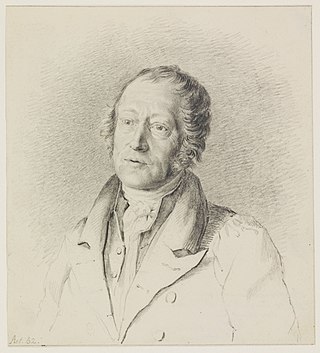
Gerrit Lamberts (1776–1850) was a Dutch painter and curator of the Rijksmuseum when it was located in the Trippenhuis.

The Exhibition of Living Masters was the name given to a series of exhibitions of contemporary art, held in various cities in the Netherlands, from 1808 to 1917.

